Fostering Project-Based Learning through Industry Engagement in Capstone Design Projects
Abstract
1. Introduction
2. Contextual Background of the Senior Capstone Courses
3. Feedback from Students and Practitioners
4. Success Stories
5. Discussion
6. Conclusions
Author Contributions
Funding
Conflicts of Interest
References
- Eide, A.R.; Jenison, R.D.; Mashaw, L.H.; Northup Larry, L. Engineering Fundamentals and Problem Solving, 3rd ed.; McGraw Hill: New York, NY, USA, 1997. [Google Scholar]
- ABET Engineering Accreditation Commission. Criteria for Accrediting Engineering Programs, June 2012. Available online: http://www.abet.org/wp-content/uploads/2015/04/eac-criteria-2012-2013.pdf (accessed on 25 June 2012).
- McKenzie, L.J.; Trevisan, M.S.; Davis, D.C.; Beyerlein, S.W. Capstone Design Courses and Assessment: A National Study. In Proceedings of the American Society of Engineering Education Annual Conference & Exposition, Salt Lake City, UT, USA, 20–23 June 2004; pp. 9.286.1–9.286.17. [Google Scholar]
- Kirschenman, M.D.; Brenner, B. Civil engineering design as the central theme in civil engineering education curriculum. Leadersh. Manag. Eng. 2011, 11, 69–71. [Google Scholar] [CrossRef]
- Meah, K.; Hake, D.; Wilkerson, S.D. A Multidisciplinary Capstone Design Project to Satisfy ABET Student Outcomes; Education Research International: London, UK, 2020; pp. 1–17. [Google Scholar]
- Todd, R.H.; Magleby, S.P.; Sorensen, C.D.; Swan, B.R.; Anthony, D.K. A survey of capstone engineering courses in North America. Eng. Educ. 1995, 82, 165–174. [Google Scholar] [CrossRef]
- Burns, C.; Chopra, S. A Meta-analysis of the Effect of Industry Engagement on Student Learning in Undergraduate Programs. J. Technol. Manag. Appl. Eng. 2017, 33, 2–20. [Google Scholar]
- Chan, C.; Zhao, Y.; Luk, L. A validated and reliable instrument investigating engineering students’ perceptions of competency in generic skills. J. Eng. Educ. 2017, 106, 299–325. [Google Scholar] [CrossRef]
- Craps, S.; Pinxten, M.; Saunders, G.; Leandro Cruz, M.; Gaughan, K.; Langie, G. Professional Roles and Employability of Future Engineers. In Proceedings of the 45th SEFI Conference, Azores, Portugal, 18–21 September 2017. [Google Scholar]
- Paretti, M.C.; Kotys-Schwartz, D.A.; Howe, S.; Ford, J.D.; Lutz, B.D.; Kochersberger, K.; Gewirtz, C.; Rosenbauer, L.M.; Arunkumar, S. From School to Work: Understanding the Transition from Capstone Design to Industry. In Proceedings of the ASEE 124th Annual Conference and Exposition, Columbus, OH, USA, 24–28 June 2017. [Google Scholar]
- Edström, K. Academic and Professional Values in Engineering Education: Engaging with History to Explore a Persistent Tension. Eng. Stud. 2018, 10, 38–65. [Google Scholar] [CrossRef]
- Goldberg, J.; Cariapa, V.; Corliss, G.; Kaiser, K. Benefits of industry involvement in multidisciplinary capstone design courses. Int. J. Eng. Educ. 2014, 30, 6–13. [Google Scholar]
- Howe, S. Where Are We Now? Statistics on Capstone Courses Nationwide. In Advances in Engineering Education, American Society for Engineering Education; Spring: Berlin/Heidelberg, Germany, 2010. [Google Scholar]
- Pembridge, J.; Paretti, M. The Current State of Capstone Design Pedagogy. In Proceedings of the American Society for Engineering Education, Louisville, KY, USA, 20–23 June 2010. AC 2010-811. [Google Scholar]
- Akili, W. Project-oriented capstone design in civil engineering: Linkages with industry to enhance the practice. In Proceedings of the 117th American Society for Engineering Education (ASEE) Annual Conference & Exposition, Louisville, KY, USA, 20–23 June 2010. [Google Scholar]
- Brunell, L.R. Effective Implementation of Industry Sponsored Senior Design at Stevens Institute of Technology. In Proceedings of the 2005 ASEE Annual Conference and Exposition, Portland, OR, USA, 12–15 June 2005. [Google Scholar]
- Drnevich, V. The Senior Design Process at Purdue University. In Proceedings of the 2005 ASEE Annual Conference and Exposition (Paper Number 2005-2510), Portland, OR, USA, 12–15 June 2005. [Google Scholar]
- Gnanapragasam, N. Industrially Sponsored Senior Capstone Experience: Program Implementation and Assessment. J. Prof. Issues Eng. Educ. Pract. ASCE 2008, 134, 257–262. [Google Scholar] [CrossRef]
- Guanes, G.; Wang, L.; Delaine, D.A.; Dringenberg, E. Empathic approaches in engineering capstone design projects: Student beliefs and reported behaviour. Eur. J. Eng. Educ. 2022, 47, 429–445. [Google Scholar] [CrossRef]
- O’Bannon, D.; Kimes, T. Design-to-Build = Civil Engineering Capstone + Municipality. In Proceedings of the 2006 ASEE Annual Conference and Exposition (Paper Number 2007-70), Chicago, IL, USA, 18–21 June 2006. [Google Scholar]
- Farr, J.; Lee, M.; Metro, R.; Sutton, J. Using a systematic engineering design process to conduct undergraduate engineering management capstone projects. J. Eng. Educ. 2001, 90, 193–197. [Google Scholar] [CrossRef]
- Howe, S.; Goldberg, J. Engineering Capstone Design Education: Current Practices, Emerging Trends, and Successful Strategies. In Design Education Today; Schaefer, D., Coates, G., Eckert, C., Eds.; Springer: Cham, Switzerland, 2019. [Google Scholar] [CrossRef]
- Jaeger, B.K.; Smyser, B.M. Student-Generated Metrics as a Predictor of Success in Capstone Design. In Proceedings of the American Society for Engineering Education Conference, Indianapolis, IN, USA, 15–18 June 2014. [Google Scholar]
- Ozkan, D.S.; Murzi, H.M.; Salado, A.; Gerwitz, C. Reality Gaps in Industrial Engineering Senior Design or Capstone Projects. In Proceedings of the American Society for Engineering Education Conference, New Orleans, LA, USA, 23–27 June 2018. [Google Scholar]
- Fiegel, G.; DeNatale, J. Collaborating with local practitioners to lead a capstone civil engineering design course. In Proceedings of the 117th American Society for Engineering Education (ASEE) Annual Conference & Exposition, Louisville, KY, USA, 20–23 June 2010. [Google Scholar]
- Schmidt, D.E.; Clark, R.M. Improving Student Capstone Experience by Early Exposure and Engagement. In Proceedings of the ASEE 124th Annual Conference and Exposition, Columbus, OH, USA, 24–28 June 2017. [Google Scholar]
- Al-Dojayli, M.; Czekanski, A. Integrated Engineering Design Education: Vertical and Lateral Learning. J. Integr. Des. Process Sci. 2017, 21, 45–59. [Google Scholar] [CrossRef]
- Fries, R.; Cross, B.; Zhou, J.; Verbais, C. How Student Written Communication Skills Benefit during Participation in an Industry-Sponsored Civil Engineering Capstone Course. Adv. Eng. Educ. 2017, 6, 1–22. [Google Scholar]
- Florida Gulf Coast University (FGCU) students reveal redesign for Ponce de Leon Park. Available online: http://www.nbc-2.com/story/28718195/fgcu-students-reveal-redesign-for-ponce-de-leon-park (accessed on 10 October 2017).
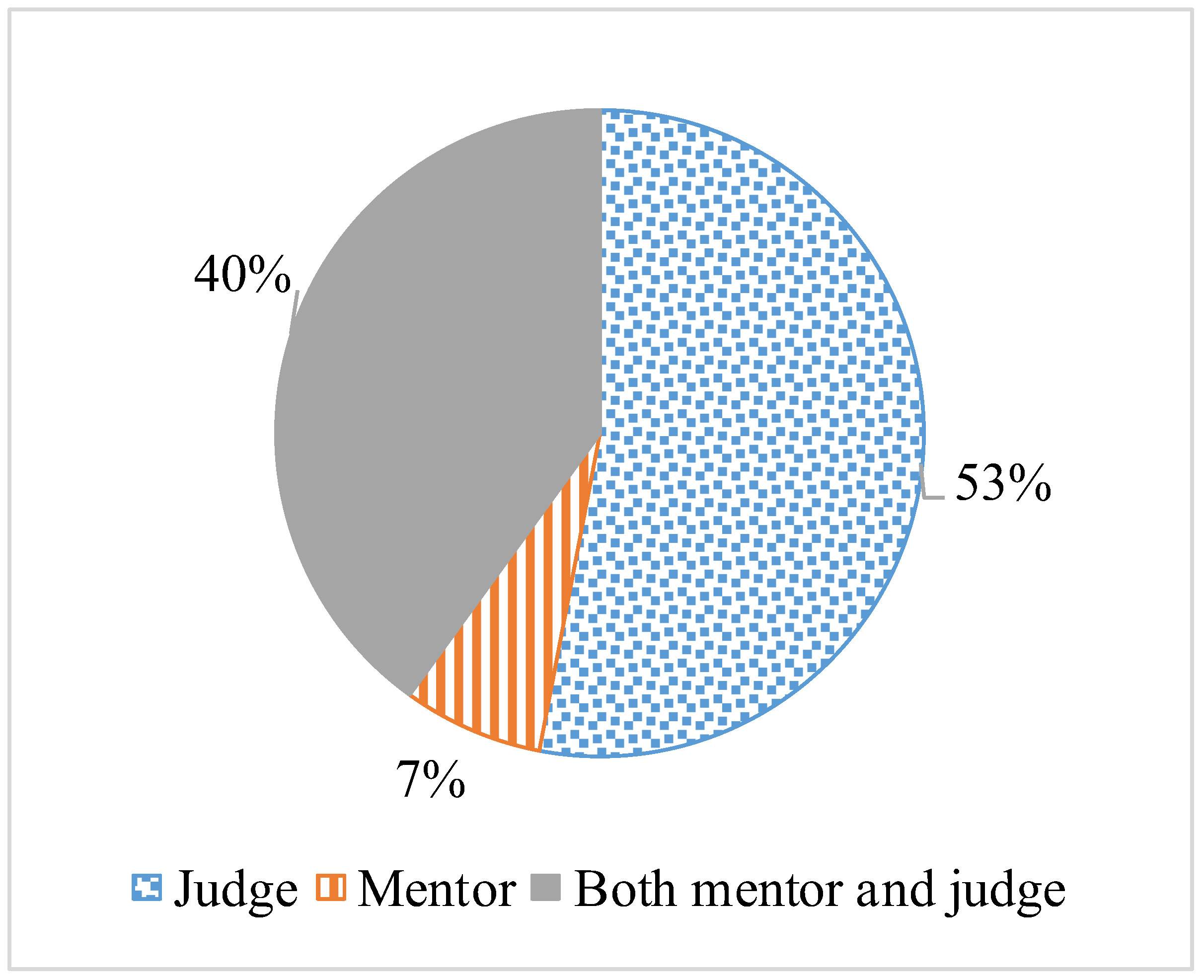
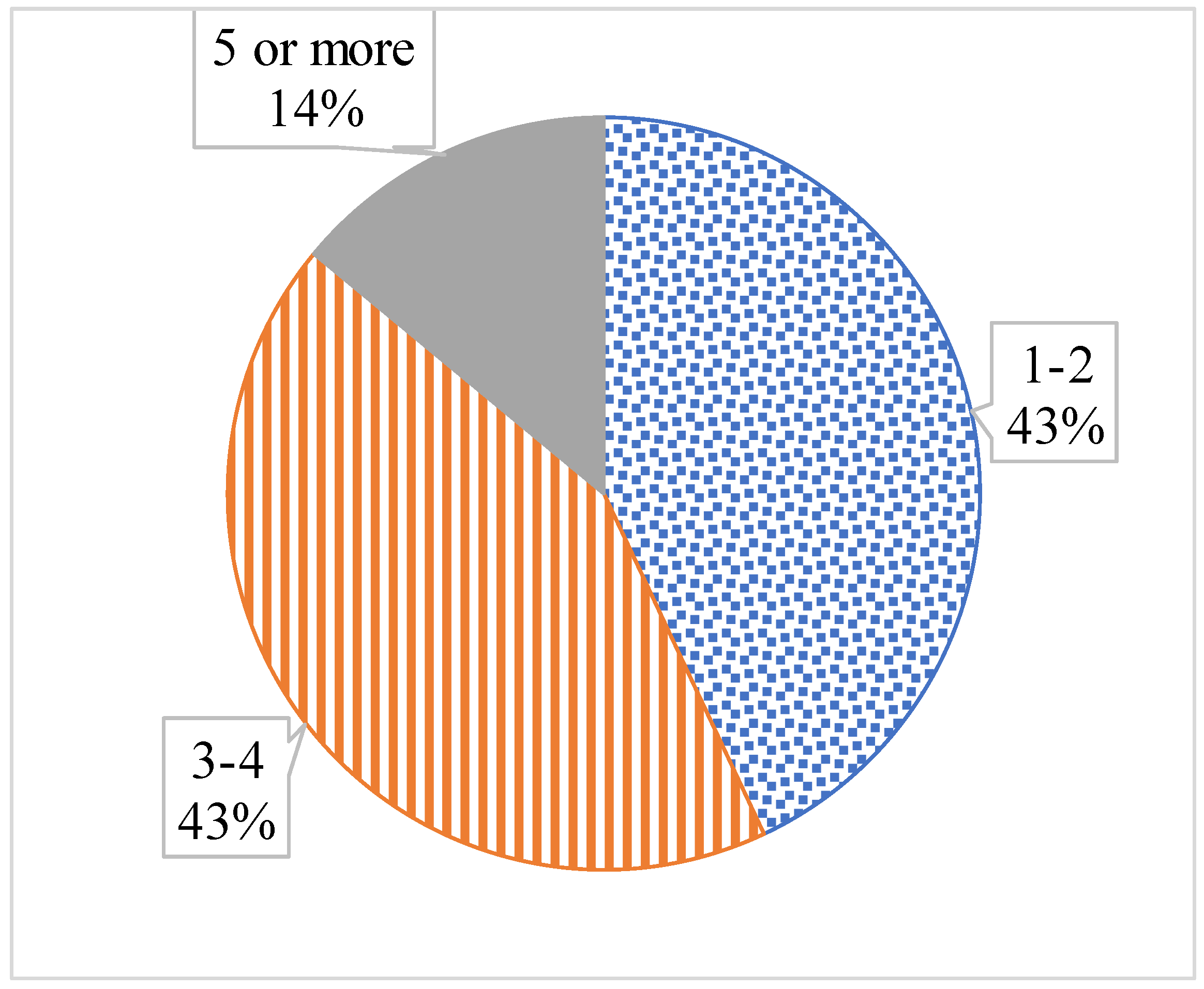
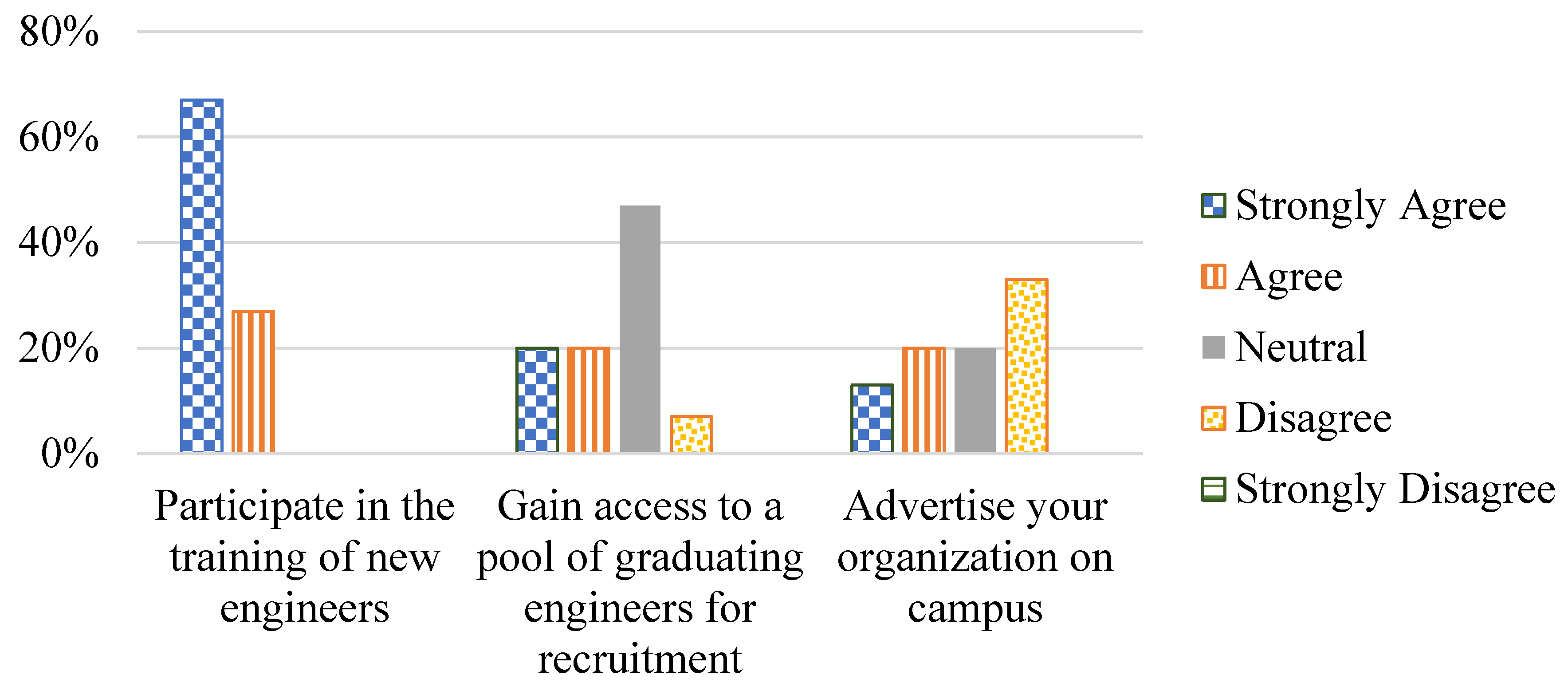
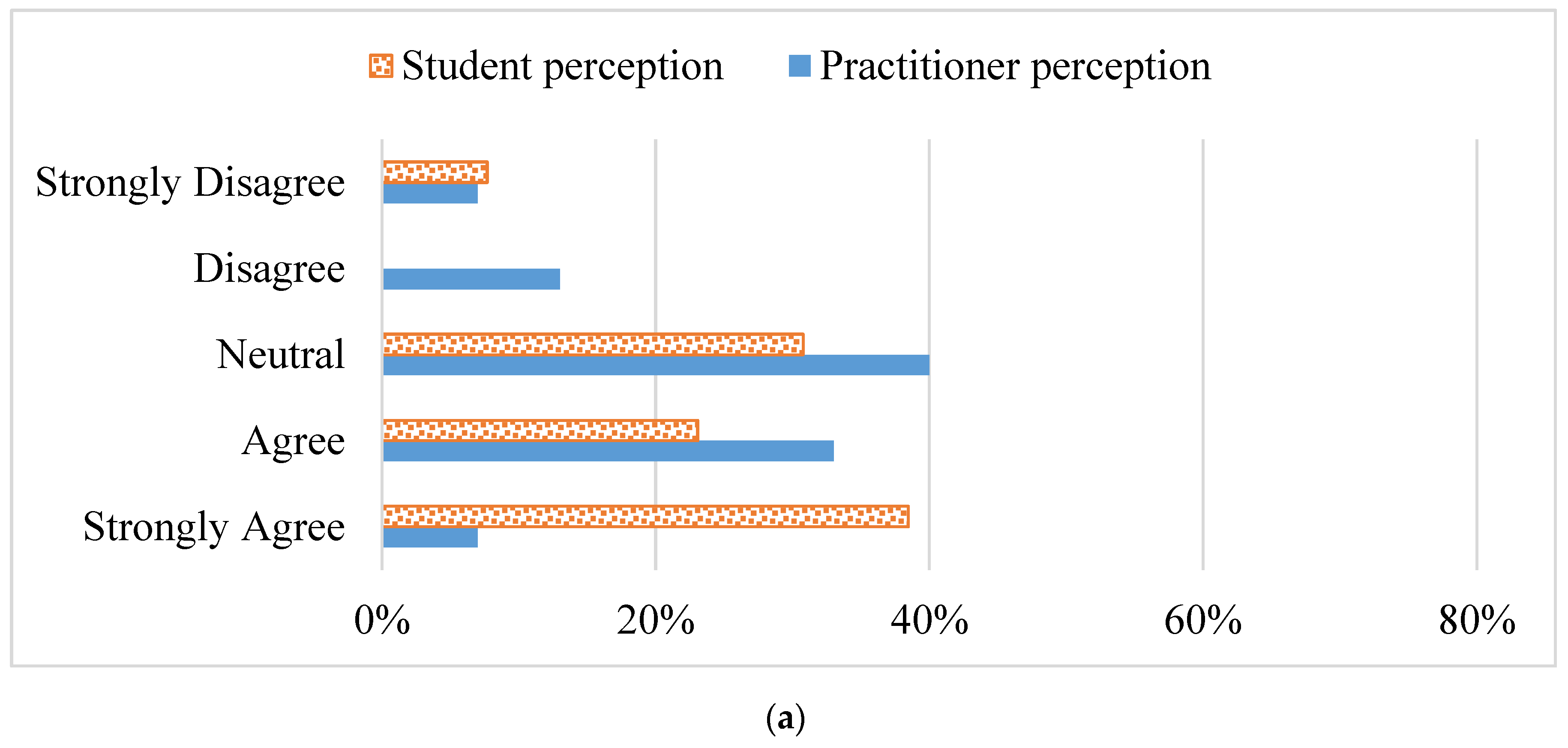
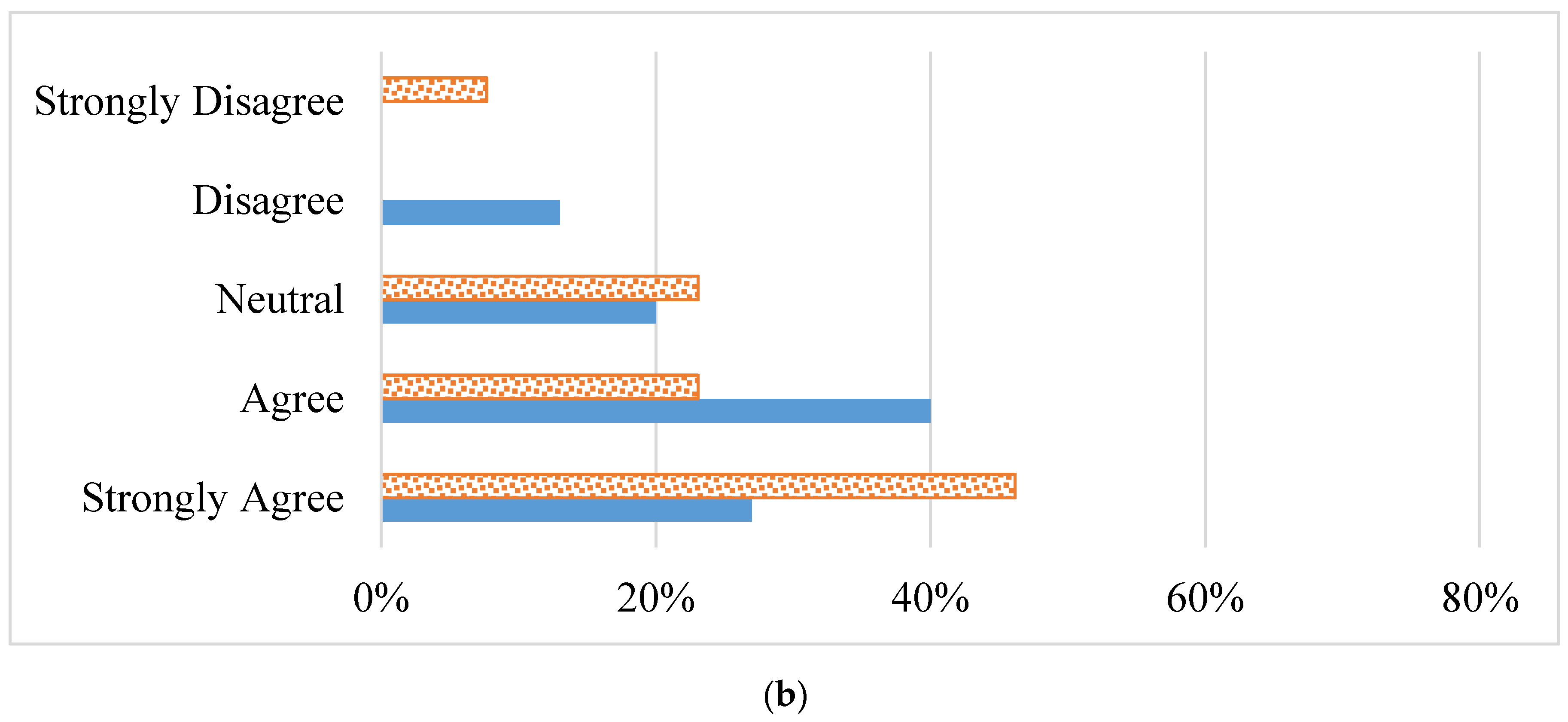
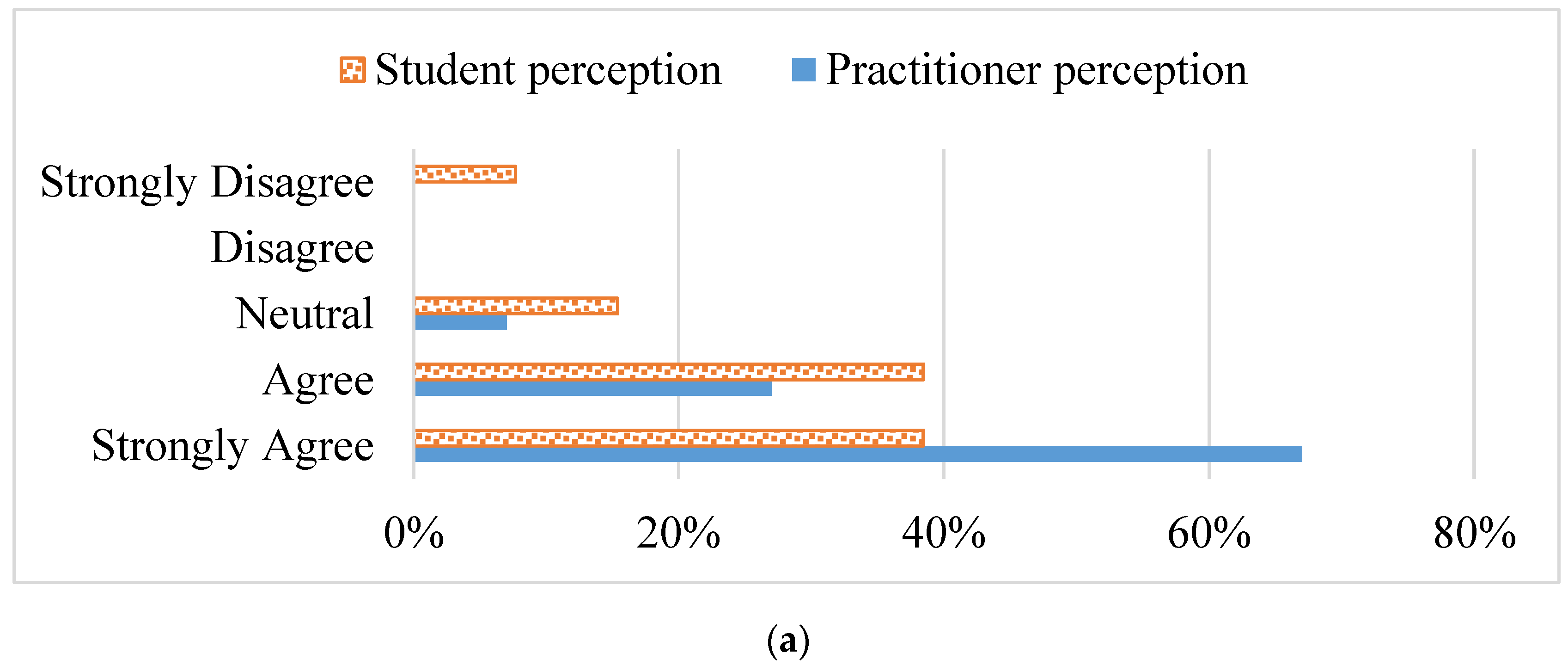

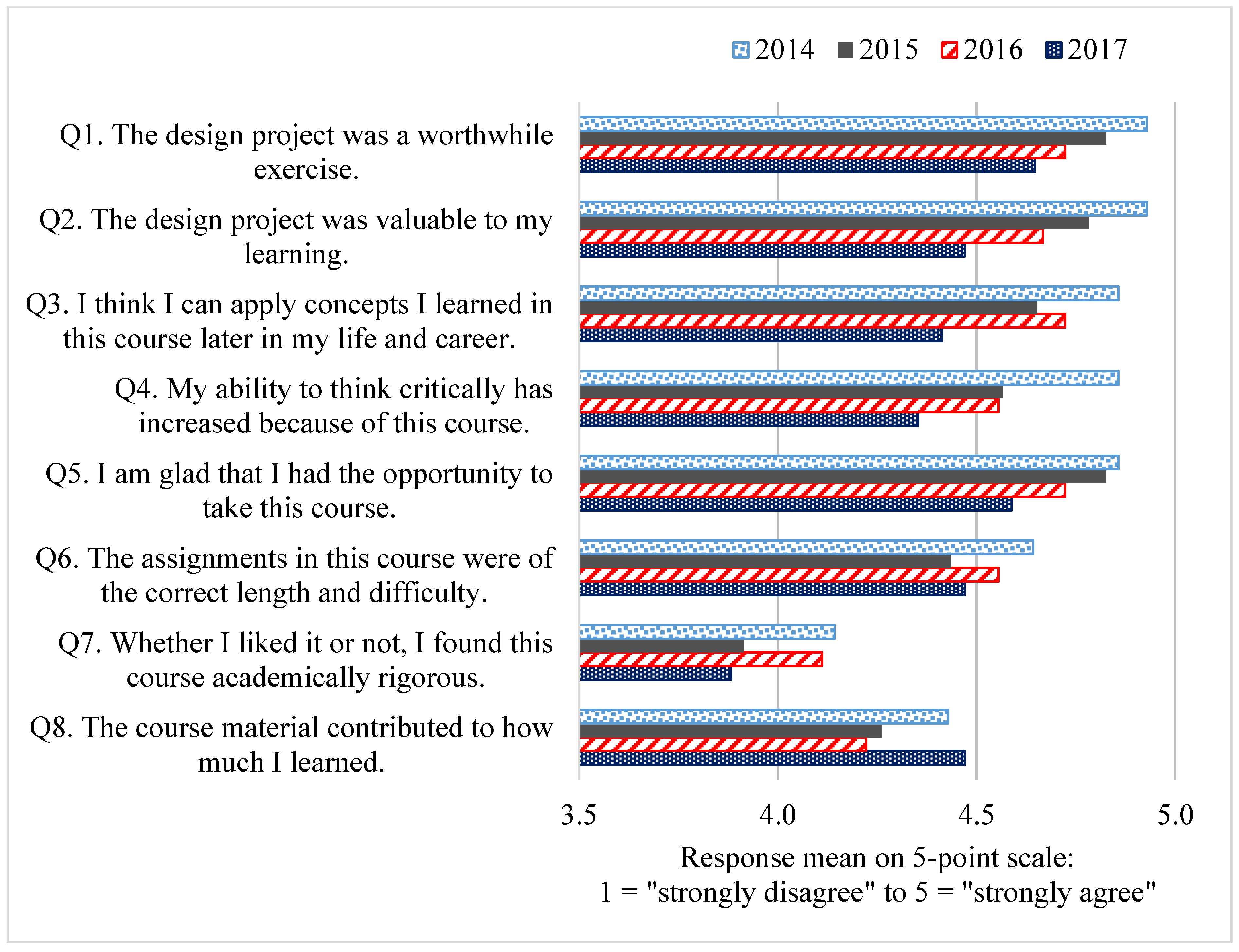
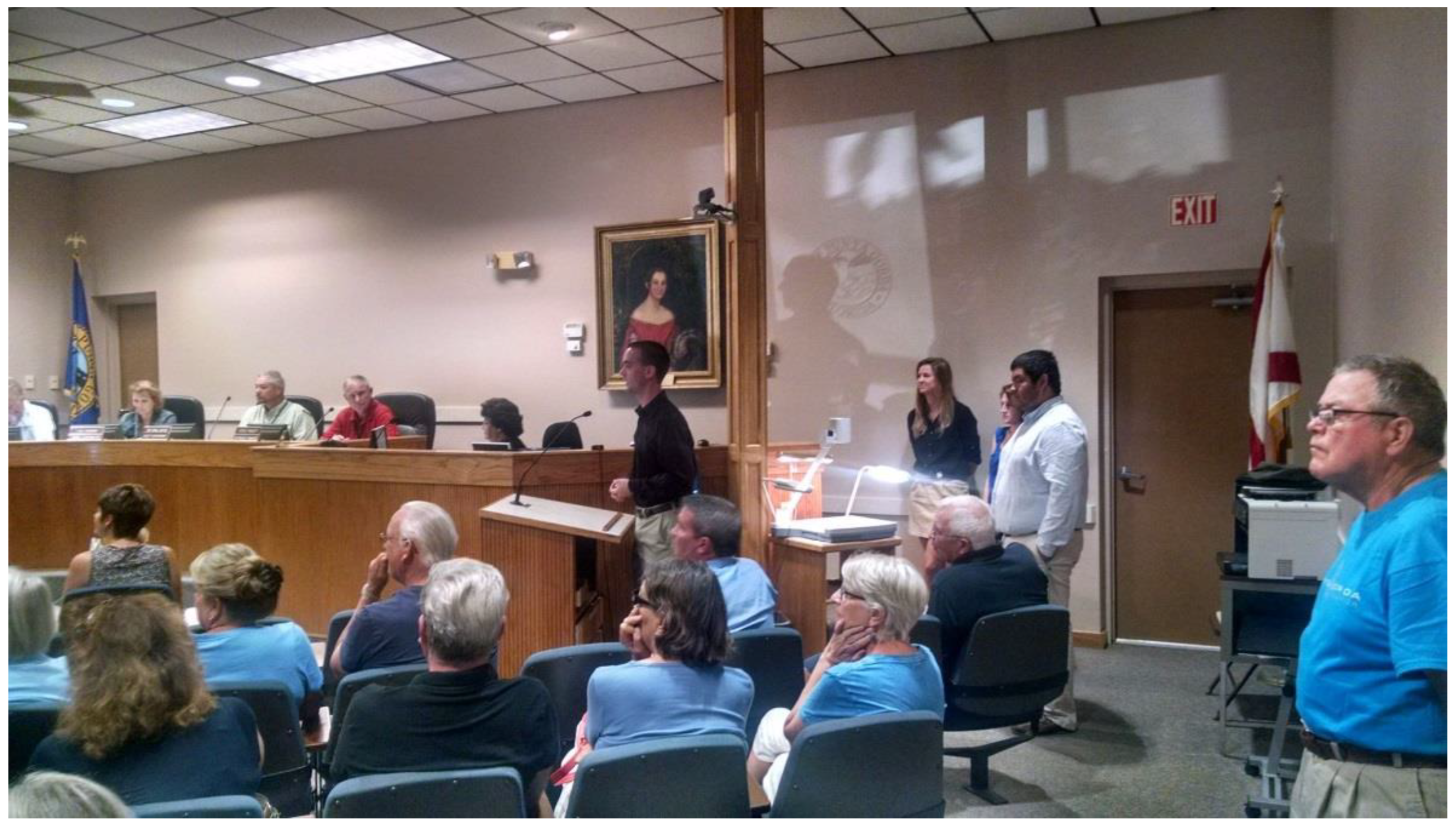
| Topic | Scope |
|---|---|
| A space network control center | Design an airport communication building and antenna foundation |
| Design of an access road | Traffic pattern research, design of pavement, road geometry, retention ponds, control structures, and cost analysis |
| A university athletic field | Design of site (basketball courts, football, and soccer fields) and an underground water detention system |
| A two-story school building | Design a steel structure and its foundation |
| A water control structure | Water management research, design of adjustable weir to facilitate both water storage and flood prevention |
| Culverts for everglades restoration | Water management research, design roadway culverts to induce the spreading of sheet flow |
| Public park | Design of open space, amphitheater, drainage, access, and event area |
| Topic | Scope |
|---|---|
| Design of a phosphorus recovery process for wastewater and stormwater treatment | Design and test electrocoagulation system using solar power and aluminum electrodes |
| Design of a bioreactor to treat campus-generated hazardous wastes | Design and build a hybrid suspended and attached growth system |
| Evaluation of management strategies to lower energy usage in a reverse osmosis desalination plant | Reconfigure the number and placement of membranes to utilize pressure recovery |
| Examination of a wetland system nutrient removal in an urban setting | Design and place monitoring wells and weirs to measure the quality and quantity of water |
| Source tracking of microbial contaminants in an urban stream | Design a sampling and analysis protocol to track fecal contamination |
| Design of a floating wetland for control of nutrients in a stormwater detention pond | Specify the size of floating islands, number and type of plants |
| Course Objectives | ABET Student Outcomes |
|---|---|
| Applying appropriate mathematical and scientific models to solve client-based problems | a |
| Designing a system, component, or processes to meet desired engineering needs | c and k |
| Determining the impact of contemporary issues on the design process considering realistic constraints such as economic, environmental, social, political, ethical, health and safety, regulatory, manufacturability, and sustainability | j |
| Developing an understanding and being able to explain the importance of professional and ethical responsibility, and professional development | f |
| Demonstrating effective communication skills | g |
| Demonstrating an understanding of how their solutions impact global, social, and environmental contexts | h |
| The Ability of the Students to: | Poor | Fair | Good | Very Good | Excellent |
|---|---|---|---|---|---|
| Recognize and incorporate the different design constraints of their projects | 0% | 7% | 40% | 40% | 13% |
| Conduct research for their projects using library and/or electronic resources | 0% | 7% | 27% | 33% | 33% |
| Identify and correctly interpret the relevant engineering codes and standards for their projects | 0% | 7% | 20% | 60% | 13% |
| Interpret and assess data provided for their projects (e.g., lab test results, field test results, topography, traffic data, as-built plans, etc.) | 0% | 7% | 33% | 47% | 13% |
| Evaluate the reasonableness of their design solutions relative to constructability, cost, regulatory environment, etc. | 7% | 36% | 29% | 21% | 7% |
| Assess the impact that their design solutions will have on the local environment | 0% | 20% | 27% | 33% | 20% |
| Use computational software and/or spreadsheets to support their design calculations | 0% | 21% | 14% | 36% | 29% |
| Produce engineering design sketches and/or drawings | 8% | 23% | 15% | 38% | 15% |
| Possess communication skills with regard to the presentations | 0% | 0% | 57% | 43% | 0% |
Disclaimer/Publisher’s Note: The statements, opinions and data contained in all publications are solely those of the individual author(s) and contributor(s) and not of MDPI and/or the editor(s). MDPI and/or the editor(s) disclaim responsibility for any injury to people or property resulting from any ideas, methods, instructions or products referred to in the content. |
© 2023 by the authors. Licensee MDPI, Basel, Switzerland. This article is an open access article distributed under the terms and conditions of the Creative Commons Attribution (CC BY) license (https://creativecommons.org/licenses/by/4.0/).
Share and Cite
Badir, A.; O’Neill, R.; Kinzli, K.-D.; Komisar, S.; Kim, J.-Y. Fostering Project-Based Learning through Industry Engagement in Capstone Design Projects. Educ. Sci. 2023, 13, 361. https://doi.org/10.3390/educsci13040361
Badir A, O’Neill R, Kinzli K-D, Komisar S, Kim J-Y. Fostering Project-Based Learning through Industry Engagement in Capstone Design Projects. Education Sciences. 2023; 13(4):361. https://doi.org/10.3390/educsci13040361
Chicago/Turabian StyleBadir, Ashraf, Robert O’Neill, Kristoph-Dietrich Kinzli, Simeon Komisar, and Jong-Yeop Kim. 2023. "Fostering Project-Based Learning through Industry Engagement in Capstone Design Projects" Education Sciences 13, no. 4: 361. https://doi.org/10.3390/educsci13040361
APA StyleBadir, A., O’Neill, R., Kinzli, K.-D., Komisar, S., & Kim, J.-Y. (2023). Fostering Project-Based Learning through Industry Engagement in Capstone Design Projects. Education Sciences, 13(4), 361. https://doi.org/10.3390/educsci13040361







